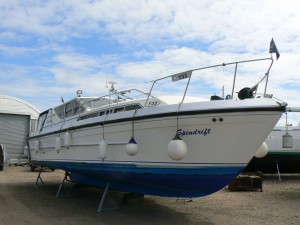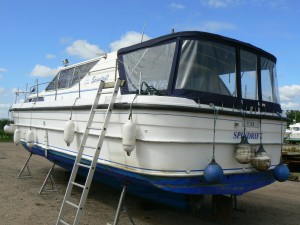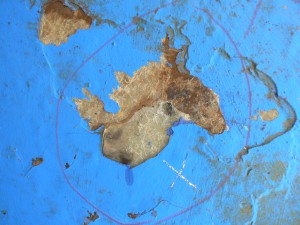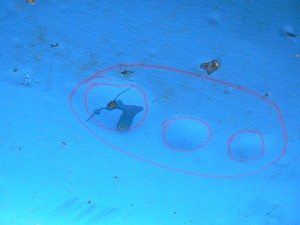EMS recently carried out a Pre Purchase Survey on a Westwood 38 and the most interesting ‘hull structural conditions’ were found – as follows …..
Firstly
” It is generally accepted that osmotic blisters will not be found with ‘low’ moisture meter readings. Not all blisters are caused by osmosis, some will be found to be dry blisters, these may often appear in the gel coat and usually caused by aeration when the original batch of gel coat was mixed ”
However the hull below the waterline had quite extensive blistering average about 20 – 30mm, with some odd blisters up to 60mm – the blisters being under internal pressure from blister juice
” A blister was burst giving off chemical-smelling (blister juice) liquid, being acid and breaks down the polyester in a process known as hydrolysis – being normally localized. The moulding as a whole will still retain most of its strength unless these current blisters become very much larger and much more extensive “
However, we discovered that the hull when measured with a Tramex Moisture Meter gave generally low readings of around 16% or for GRP ~1.6%. From experience such low readings with this degree of osmosis are very very unusual – and indeed ‘acceptable’ in a boat of this vintage
Secondly
There were several small areas the size of a small plate (but not round) below the waterline where the gel coat laminate had actually ‘delaminated’ cleanly from the hull. Exposing the underlying substrate.
These small areas did not appear to have been the consequence of a large blister or combination of blisters
It appeared that (though we find this difficult to explain) the gel coat had never actually bonded with the substrate.
Despite the substrate being exposed constantly to water without the added protection of the gel coat, moisture meter readings taken on these exposed substrate areas also gave low readings
We are at a loss to explain the above and having carried out over 1,000 hull osmotic inspections over the past few years we have never (yet) come across such a combination / condition – There is always something new to learn !
Our advice to the client is to clean and dry the exposed areas of substrate and apply an epoxy coating
If anyone has come across such a combination of low meter readings plus extensive osmosis plus gel coat delamination, we would pleased to hear about it and welcome feed back
Exposed GRP substrate minus the gel coat Burst osmotic blister with ‘blister juice’
For more information contact European Marine Services Ltd. Marine Surveyors & Consultants
EMS also undertake Boat Safety Inspections & Engine Inspections
www.europeanmarinesurveys.com
Tel: 01603 327 123










